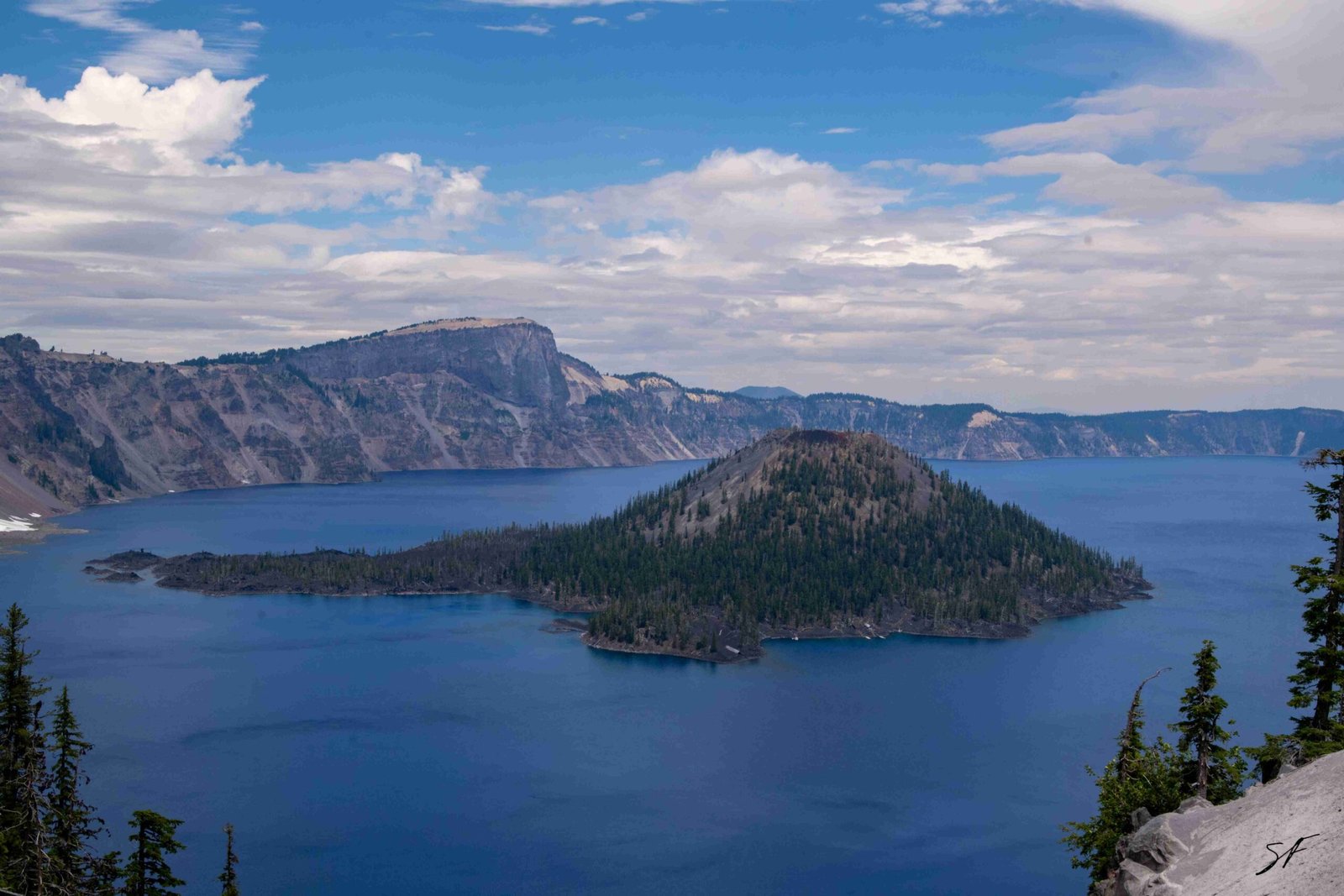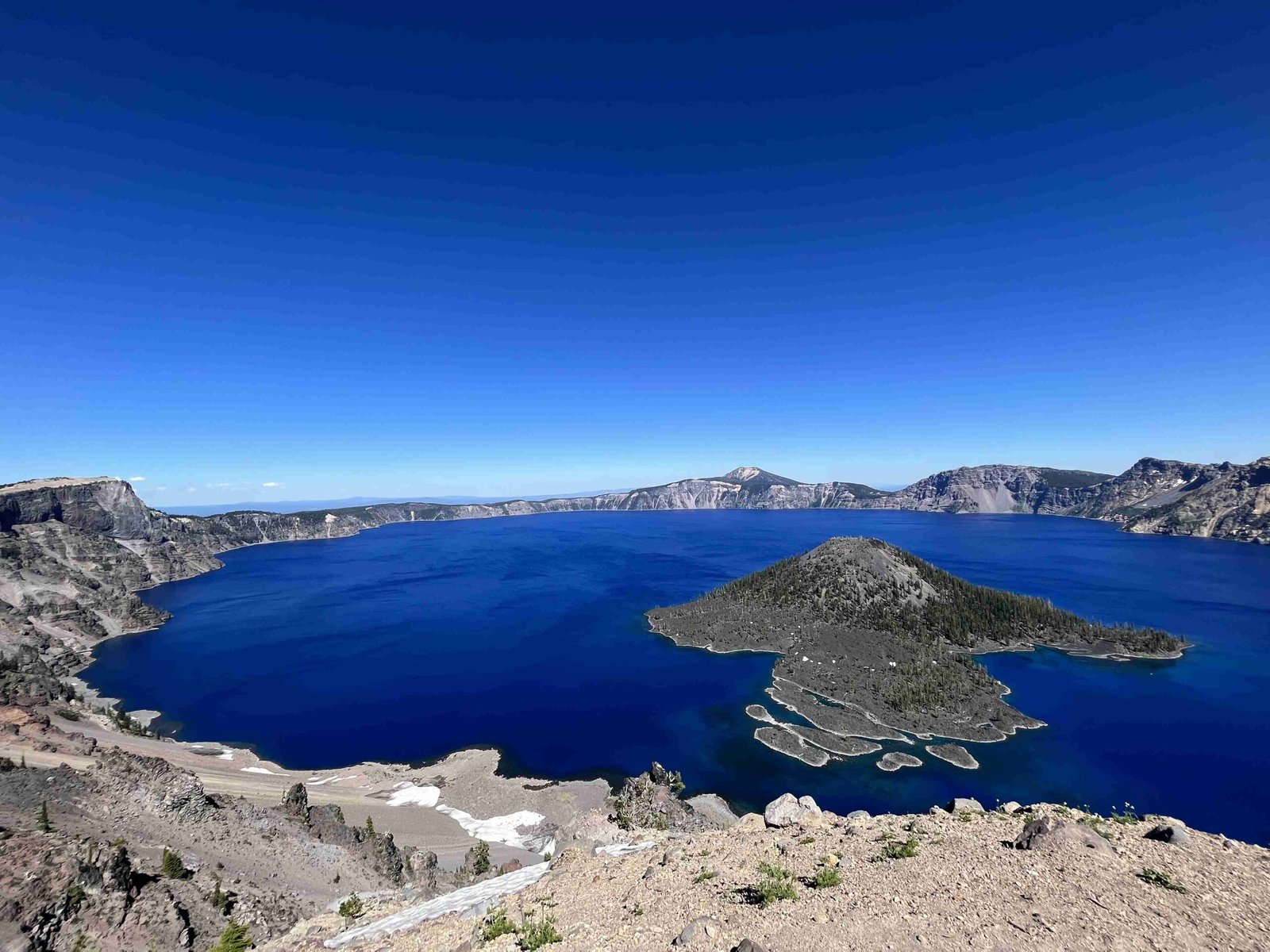Oregon’s Crater Lake, formed by the collapse of Mount Mazama, showcases a fascinating history of magma flow and volcanic activity. The lake’s formation is directly linked to explosive eruptions and subsequent caldera collapse. Understanding the magma flow patterns, from highly viscous explosive eruptions to less violent post-caldera events, provides insight into the geological processes that shaped this natural wonder. This article explores the intricacies of Oregon Crater Lake’s magma flow, its impact on the landscape, and the resulting geological features.
What Are the Key Characteristics of Oregon Crater Lake’s Magma Flow?

The magma flow associated with Crater Lake exhibits distinct characteristics that have shaped its formation and evolution:
- Highly explosive initial eruptions
- Silica-rich magma composition (dacite and rhyodacite)
- Varying viscosity over time
- Post-caldera eruptions with less violent magma extrusion
These characteristics have played a crucial role in creating the unique landscape we see today at Crater Lake.
How Did Magma Flow Patterns Influence Crater Lake’s Formation?

The formation of Crater Lake is intimately tied to the magma flow patterns of Mount Mazama. Here’s a breakdown of the key events:
- Pre-caldera eruptions: Highly explosive eruptions characterized the volcanic activity for thousands of years.
- Climactic eruption: Approximately 7,700 years ago, a massive eruption led to the collapse of Mount Mazama.
- Caldera formation: The collapse created a massive depression that would eventually become Crater Lake.
- Post-caldera activity: Smaller eruptions within the caldera formed features like Wizard Island and the central platform.
This sequence of events, driven by magma flow patterns, resulted in the creation of one of North America’s deepest and most pristine lakes.
What Is the Composition of Crater Lake’s Magma?
The magma composition at Crater Lake has varied over time, influencing the type and intensity of eruptions. Here’s a table summarizing the key magma types:
| Magma Type | Characteristics | Associated Features |
|---|---|---|
| Dacite | Silica-rich, explosive | Pyroclastic flows, ash deposits |
| Rhyodacite | Highly silicic, very explosive | Pumice deposits, large ash clouds |
| Andesite | Less silicic, less explosive | Post-caldera lava flows, Wizard Island |
The varying composition of magma has contributed to the diverse geological features observed around Crater Lake.
How Has Magma Viscosity Affected Crater Lake’s Volcanic History?
Magma viscosity has played a crucial role in shaping Crater Lake’s volcanic history:
- High viscosity magma: Led to more explosive eruptions in the early stages of Mount Mazama’s activity.
- Lower viscosity magma: Resulted in less violent eruptions during the later stages and post-caldera period.
This variation in viscosity has influenced the types of volcanic structures and deposits found in and around Crater Lake.
What Are the Post-Caldera Magma Flow Features at Crater Lake?
After the formation of the caldera, magma flow continued to shape Crater Lake’s landscape. Key post-caldera features include:
- Wizard Island: A cinder cone formed by less explosive eruptions within the caldera.
- Merriam Cone: An underwater volcanic feature created by post-caldera eruptions.
- Central Platform: A submerged volcanic structure formed by later magma extrusion.
- Rhyodacite Dome: A small dome on the caldera floor, indicating continued volcanic activity.
These features demonstrate the ongoing influence of magma flow even after the main caldera-forming event.
How Long Did It Take for Crater Lake to Form After the Major Eruption?
The formation of Crater Lake was not an instantaneous process. Here’s a timeline of events:
- Climactic eruption and caldera collapse: ~7,700 years ago
- Initial filling of the caldera with water: Began immediately after collapse
- Complete filling to current lake level: 250-720 years (estimates vary)
Factors influencing the filling rate included:
– Precipitation levels
– Evaporation rates
– Seepage through the caldera walls
– Ongoing volcanic and sedimentary processes
What Can Visitors Learn About Magma Flow at Crater Lake National Park?
Visitors to Crater Lake National Park have numerous opportunities to learn about magma flow and its impact on the landscape:
- Ranger-led programs: Guided walks and talks focusing on the park’s geology
- Visitor centers: Exhibits and educational materials on volcanic processes
- Scenic drives: The Rim Drive offers panoramic views of the caldera and its features
- Hiking trails: Paths that showcase various volcanic formations and deposits
- Boat tours: Up-close views of the caldera walls and Wizard Island
These educational resources provide visitors with a comprehensive understanding of Oregon Crater Lake’s magma flow history.
How Does Crater Lake’s Magma Flow Compare to Other Volcanic Lakes?
Crater Lake’s magma flow history is unique, but it shares some similarities with other volcanic lakes:
- Similarities:
- Caldera formation through explosive eruptions
- Post-caldera volcanic activity
-
Varying magma compositions over time
-
Differences:
- Depth: Crater Lake is one of the deepest lakes in North America
- Water clarity: Exceptionally clear due to lack of inflowing streams
- Magma composition: Specific mix of dacite and rhyodacite
Understanding these comparisons helps contextualize Crater Lake’s geological significance.
What Ongoing Research Is Being Conducted on Crater Lake’s Magma Flow?
Scientists continue to study Crater Lake’s magma flow and volcanic history. Current research areas include:
- Detailed mapping of underwater volcanic features
- Analysis of volcanic deposits to refine eruption timelines
- Monitoring of potential volcanic activity using seismic instruments
- Studies on the lake’s hydrothermal systems and their relation to past magma flows
- Climate change impacts on the lake’s ecosystem and geological processes
This ongoing research enhances our understanding of Oregon Crater Lake’s magma flow and its broader implications for volcanology.
In conclusion, the study of Oregon Crater Lake’s magma flow provides valuable insights into volcanic processes, caldera formation, and the geological history of the Cascade Range. The unique features and ongoing research at Crater Lake continue to contribute to our understanding of volcanic systems and their impact on landscape formation.

